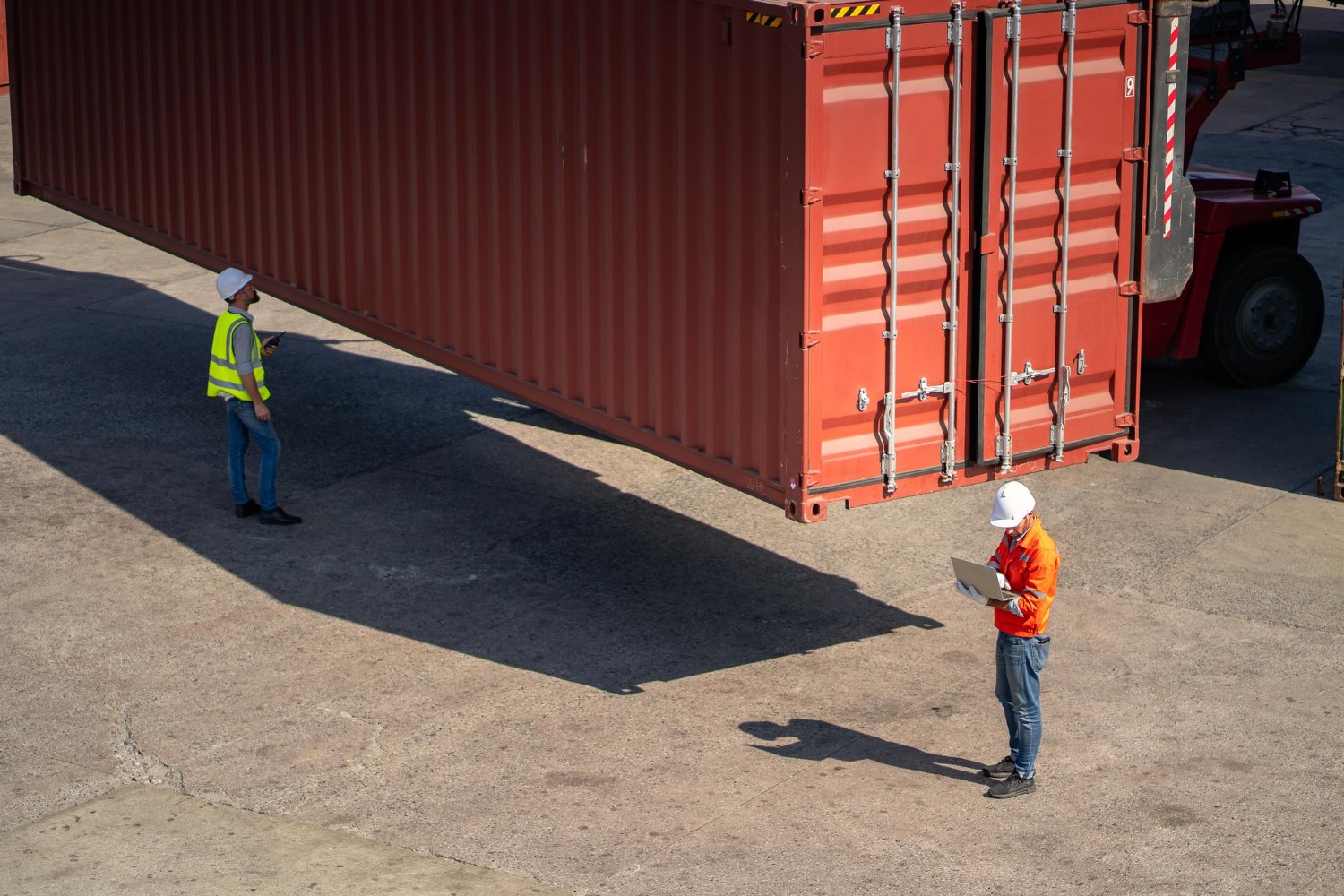
🎄 Festive Rush - Deliveries might take a bit longer. We appreciate your patience.
Festive Period 2025
Cut-Off Times
You’re shipping to the USA, but your parcel gets stuck at customs again. The reason is usually incomplete paperwork or missing invoice details. In 2025, the U.S. Customs and Border Protection (CBP) introduced tighter rules that can delay or return shipments if details are missing.
These new requirements affect all Australian businesses exporting to the U.S., from small e-commerce sellers to large freight shippers. This guide explains what changed, what shipments get held, and how you can prepare compliant paperwork to keep your shipments moving.
U.S. import regulations have tightened significantly in 2025. Customs officers now check invoices line by line, even for small parcels. The average customs clearance time for imports is one to three business days.
Every parcel shipped to the U.S. must now be treated as a formal export entry, regardless of size or value. Each field on your commercial invoice matters, and even one missing detail can stop your goods at the border.
Key changes for 2025 shipments include:
Before booking your next U.S. shipment, double-check that every document is complete and compliant. Couriers & Freight helps Australian businesses prepare accurate invoices, meet U.S. import rules, and ship to America with fewer delays.
Recent Customs and Border Protection (CBP) data shows that most U.S. clearance delays stem from these six recurring issues.
Every package shipped to the U.S. must include a complete electronic commercial invoice. Without it, CBP can’t confirm the shipment’s contents or value.
Example: An online retailer sent ten parcels without invoices; all were held for verification and returned after a week.
Vague descriptions like “clothes” or “electronics” no longer pass customs checks. Officers need exact item details.
Example: “Men’s cotton shirt, size L” cleared instantly, while “apparel” was flagged for review.
The commercial invoice must show the Harmonised Tariff Schedule (HTS) code, country of origin, and importer identification number. Missing any of these details leads to a hold.
Example: A skincare order without an HTS code and origin country sat in customs for four days.
Customs needs both the shipper's and receiver's phone numbers and email addresses to resolve issues quickly.
Example: A shipment to New York was delayed three days because customs couldn’t contact the buyer for importer ID confirmation.
When duties remain unpaid, Customs blocks release until payment is confirmed.
Example: A parcel worth USD 1,200 was held after the recipient failed to pay duties within 48 hours.
Shipments containing food, cosmetics, or supplements require FDA clearance before release.
Example: A snack box without a Prior Notice filing was refused entry and destroyed.
Each issue comes down to the same root cause: incomplete or missing information. Understanding these rules helps anyone shipping from Australia to the USA avoid costly customs holds.

Some product categories now face stricter documentation requirements under updated U.S. customs laws. If your goods fall into these categories, additional paperwork and declarations are required to avoid delays.
Shipments containing metal items or packaging must include detailed production data. According to the U.S. Department of Commerce Steel Import Monitoring and Analysis system, you must list:
A Melbourne exporter of steel fittings included “Country of melt and pour: Australia” on each invoice and cleared customs without delay.
For any food, beverage, or pet product, exporters must file a Prior Notice (PNSI) through the FDA before shipment. The invoice must include:
A coffee roaster added its PNSI number to the invoice and avoided a seven-day clearance delay at the port of Los Angeles.
Cosmetic and medical items require the manufacturer’s FDA registration number and product code. Third-party shippers of branded goods must attach an authorisation letter from the brand owner. Certain goods, such as sunglasses or contact lenses, require a Drop Ball or Impact Resistance Certificate.
A Sydney beauty company listed the manufacturer’s FDA code and cleared its skincare batch without issue.
Following these extra steps helps prevent delays and ensures your paperwork meets all 2025 customs requirements. Once these details are covered, the next step is preparing a compliant commercial invoice.
Your commercial invoice is the key document customs officers use to verify your shipment’s contents, value, and origin. A precise, well-prepared invoice helps prevent errors that stall your goods at the U.S. border and speeds up clearance.
Treat this document as both a customs declaration and a legal record of your transaction. Double-check every field before dispatch to avoid unnecessary holds or rejections.
Use this checklist to ensure your documents meet current U.S. customs standards:
A well-prepared invoice not only helps customs verify your shipment faster but also reduces the risk of additional inspections or returns.
Once your commercial invoices are accurate and digitally submitted, the next step is making sure every shipment detail is checked before dispatch.
Every day a shipment sits in customs costs you money. Before using Couriers & Freight, many Australian exporters handled manual paperwork and spent hours fixing clearance issues. Now, with digital tools and automatic checks, they can prepare and send U.S.-bound freight with confidence.
Here’s how Couriers & Freight helps:
Before you book your next U.S. shipment, make sure your documentation is complete and compliant. Get a quote with Couriers & Freight to avoid unnecessary delays and deliver your goods on time.









MHP

No Surcharge*

$16.50

$14

$15.50
$0

$15.50

$14.75
$0
$0
$0
$0
MHP Large Item

No Surcharge*

$16.50

$75

$62

$62

$60.10

$14.75
$0
$0
$0
$0
Residential Pickup

No Surcharge*

$6
$0

$9
--

$9

$10.60
$0
$0
$0
$38.50
Reidential pick up 30-99kgs

No Surcharge*

$63
$0

$9
$0

$9

$74.15

$20
Won't carry
Won't carry

$38.50
Residential pick up 100kgs+

No Surcharge*

$198
$0

$9
$0

$9

$158.87

$50
Won't carry
Won't carry

$38.50
Residential Delivery up to 29kgs

No Surcharge*

$6
$0

$9
--

$9.00

$10.60
$0
$0
$0

$38.50
Residential Delivery up 30-99kgs

No Surcharge*

$63
$0

$9
$0

$9

$74.15

$20
Won't carry
Won't carry

$38.50
Residential Delivery 100kgs+

No Surcharge*

$198
$0

$9
--

$9

$158.57

$50
Won't carry
Won't carry

$38.50
Tail Lift Pick up 50-99kgs Sydney / Melbourne

No Surcharge*

$45

$50-$250

$88

$88

$88

$44.07

$120
Won't carry
Won't carry

$61.50
Tail Lift Pick up 100-299kgs Sydney / Melbourne

No Surcharge*

$85

$50-$250

$88

$88

$88

$44.07

$120
Won't carry
Won't carry

$61.50
Tail Lift Pick up 300-499kgs Sydney / Melbourne

No Surcharge*

$120

$50-$250

$88

$88

$88

$44.07

$120
Won't carry
Won't carry

$61.50
Tail Lift Pick up 500kgs + Sydney / Melbourne

No Surcharge*

$250

$50-$250

$88

$88

$88

$44.07

$120
Won't carry
Won't carry

$61.50
Tail Lift Delivery 50-99kgs Sydney / Melbourne

No Surcharge*

$45

$50-$250

$88

$88

$88

$44.07

$120
Won't carry
Won't carry

$61.50
Tail Lift Delivery 100-299kgs Sydney / Melbourne

No Surcharge*

$85

$50-$250

$88

$88

$88

$44.07

$120
Won't carry
Won't carry

$61.50
Tail Lift Delivery300-499kgs Sydney / Melbourne

No Surcharge*

$120

$50-$250

$88

$88

$88

$44.07

$120
Won't carry
Won't carry

$61.50
Tail Lift Delivery 500kgs + Sydney / Melbourne

No Surcharge*

$250

$50-$250

$88

$88

$88

$44.07

$120
Won't carry
Won't carry

$61.50
Dead weight over 32KGS carton freight

No Surcharge*

$16.50

$75

$70

$70

$70

$14.75
$0
Won't carry
Won't carry
$0
Oversize Surcharge 1.20 - 1.54

No Surcharge*
--
$0
$0
$0
$0

$5.40

$10

$15
Won't carry
$0
Oversize Surcharge 1.55 - 1.85

No Surcharge*

$17

$20
$0
$0
$0

$11.93

$10

$15
Won't carry
$0
Oversize Surcharge 1.86 - 2.20

No Surcharge*

$37

$40
$0
$0
$0

$11.93

$10
Won't carry
Won't carry
$0
Pallet Surcharge

No Surcharge*
--
$0
$0
$0
$0
$0
$0
Won't carry
Won't carry
$0
Hand Unload Fee Carton

No Surcharge*
--
$0

$70

$70

$70

$47
$0
Won't carry
Won't carry

$61.50
Western Australia Regional Surcharge

No Surcharge*

%10
$0
$0
$0
$0
$0
$0
$0
$0
$0
*Surcharges may apply to areas/deimensions not listed
**Prices correct of 16th September 2024
Click to start shipping in less than 60 seconds